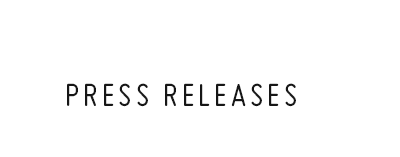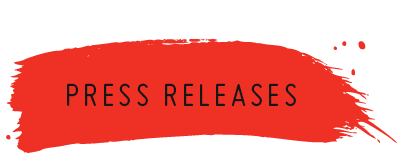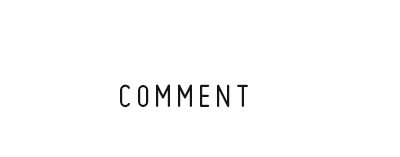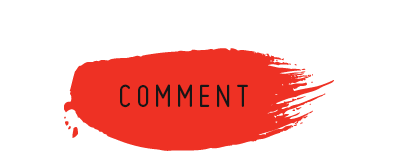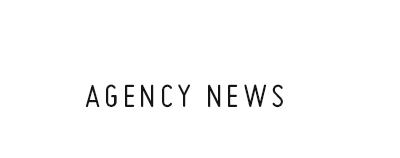Mimaki launches environmentally conscious, two-step textile transfer printing solution TRAPIS
- Mimaki’s new textile pigment transfer printing system, named TRAPIS, makes significant savings on wastewater compared to conventional methods
- Latest innovation also broadens application possibilities for print service providers, with the ability to print on a multitude of materials, including natural fibres
- System to be demonstrated with Mimaki’s inkjet printer, the TS330-1600, in Mimaki’s booth at FESPA Global Print Expo 2024 (Stand F10, Hall 12)
Amsterdam, 14th March 2024
Mimaki Europe, a leading provider of industrial inkjet printers, cutting plotters, and 3D printers, announces the commercial release of its textile pigment transfer printing system, named “TRAPIS”. Following the preview of the technology at ITMA 2023, this commercialised version, available later this year, offers an environmentally friendly and easy to operate solution for textile applications – saving almost 90% of wastewater compared to conventional methods.
TRAPIS provides a simple two-step process, consisting of an inkjet printer and a calender. The design of choice is printed by the inkjet printer with a dedicated ink onto transfer paper, which is then transferred to the application via a calender. Unlike both analogue and digital conventional dye-printing methods, TRAPIS generates almost no wastewater, only that which is produced during the printer’s automatic maintenance. Due to no pre-treatment or washing of the fabric being needed, this saves around 14.5 litres per square meter of water when compared to digital dye printing[1].
Additionally, this eliminates the need for wastewater treatment facilities, which can be both expensive and constrictive when it comes to where the solution is installed. Due to the smaller size, it is possible for the TRAPIS system to be installed in a limited space, or even at the front of a printshop.
TRAPIS also offers print service providers an easy-to-use option for textile printing. As the process only involves printing and transferring, it does not require specialised skills to operate when compared to the more complex seven- or eight-step system for digital and analogue conventional printing. The lack of a fabric conveyor belt in the system further minimises the need for time intensive maintenance.
Further simplifying the process, TRAPIS is able to print on a wide range of materials, including natural fibres like cotton and silk in addition to blended fabrics, with just one type of ink. Due to this, the process can be flexible and adapt to customer demand, even with multi-material short runs. The accompanying ink has also achieved the ZDHC MRSL Lv.3*2 certification and is bluesign® APPROVED, to ensure that it is both worker and consumer safe, as well as an environmentally friendly product. Like with Mimaki’s existing textile solution portfolio, the prints produced with TRAPIS maintain stretchability and colourfastness, without impacting aspects like breathability and water absorbability, important for sectors like home textiles, activewear and fashion.
Arjen Evertse, General Manager Sales, Mimaki Europe, comments, “After the positive reception we received when we initially showcased the technology last year, we’re pleased to now announce the release of this solution commercially at FESPA. Conscious of the evolving sustainability standards and customer demands, we created TRAPIS as an innovative and seamless system for print service providers looking to produce high-quality and vibrant textile applications, while keeping cost, time and environmental impact to a minimum.”
For more information, please visit www.mimakieurope.com.
[1] According to Mimaki’s original research, digital dye printing generates significant amount of wastewater by textile printing conveyor belt washing and fabric washing after dye fixation (steam)
2 ZDHC is a non-profit organization based in Amsterdam, the Netherlands, that works to eliminate the emission of hazardous substances in the textile and leather industry.
-
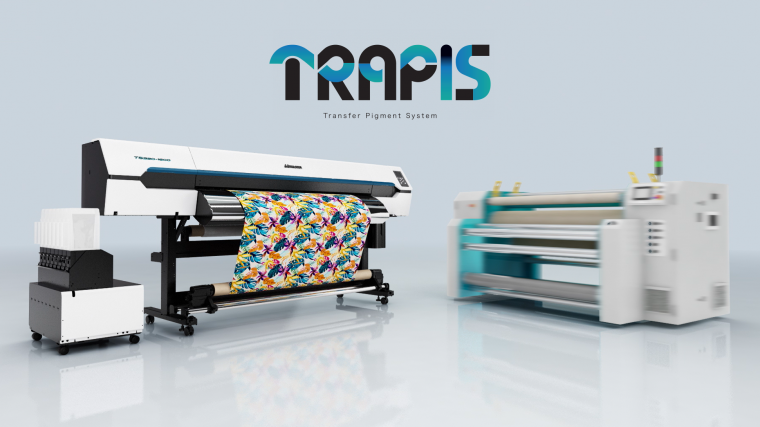 Mimaki’s TRAPIS solution provides a simple, environmentally friendly two-step process, consisting of an inkjet printer and a calender
Mimaki’s TRAPIS solution provides a simple, environmentally friendly two-step process, consisting of an inkjet printer and a calender
Click here to download 300dpi images -
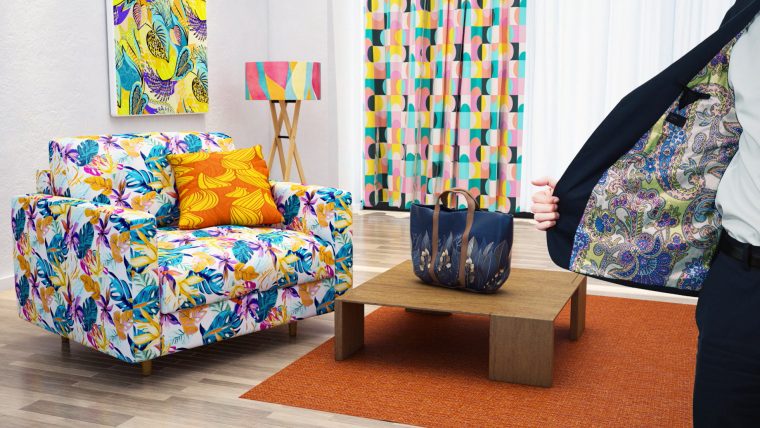 Broadening the textile application possibilities for print service providers, the system can print on a wide range of materials, including natural fibres
Broadening the textile application possibilities for print service providers, the system can print on a wide range of materials, including natural fibres
Click here to download 300dpi images
Mimaki lanceert TRAPIS, een milieubewuste, tweestaps textiel transfer printoplossing
- Mimaki’s nieuwe textiel pigment transfer printsysteem, TRAPIS genaamd, produceert aanzienlijk minder afvalwater dan conventionele methoden
- TRAPIS biedt bredere toepassingen voor printserviceproviders door de mogelijkheid op een groot aantal materialen te printen, waaronder natuurlijke vezels
- Het systeem wordt gedemonstreerd met Mimaki’s inkjetprinter, de TS330-1600, bij de Mimaki stand op FESPA Global Print Expo 2024 (Stand F10, Hal 12)
Amsterdam, 14 maart 2024 – Mimaki Europe, leverancier van industriële inkjetprinters, snijplotters en 3D-printers, kondigt de commerciële lancering aan van TRAPIS, zijn textiel pigment transfer printsysteem. Een preview van de technologie was al te zien op ITMA 2023, maar de commerciële versie komt later dit jaar beschikbaar. Deze milieuvriendelijke en eenvoudig te bedienen oplossing voor textieltoepassingen produceert bijna 90% minder afvalwater in vergelijking met conventionele methoden.
TRAPIS biedt een eenvoudig proces met slechts twee stappen op basis van een inkjetprinter en een kalander. Een ontwerp naar keuze wordt door de inkjetprinter met een speciale inkt op transferpapier gedrukt en vervolgens met een kalander op textiel overgebracht. In tegenstelling tot conventionele analoge en digitale kleurstof printmethodes genereert TRAPIS bijna geen afvalwater. Er komt enkel afvalwater vrij tijdens het automatische onderhoud van de printer omdat er geen voorbehandeling en wassen van de stof nodig is. Hiermee wordt ongeveer 14,5 liter water per vierkante meter bespaard in vergelijking met digitale direct-op-textielprintmethoden[1].
Bovendien zijn er met TRAPIS geen afvalwaterzuiveringsinstallaties nodig. Dat is niet alleen duur, maar het kan bovendien een beperking zijn voor de locatie waar de oplossing wordt geïnstalleerd. Door het kleinere formaat kan het TRAPIS-systeem in een beperkte ruimte worden geïnstalleerd, en zelfs in een printshop.
TRAPIS biedt printserviceproviders een gebruiksvriendelijke oplossing voor het bedrukken van textiel. Het proces bestaat enkel uit printen en overbrengen, waardoor er geen specialistische vaardigheden nodig zijn voor de bediening. Dat is een belangrijk voordeel, vergeleken met het complexere zeven- of achtstapssysteem voor conventioneel digitaal en analoog printen. Het ontbreken van een transportband voor stoffen in het systeem minimaliseert verder de noodzaak voor tijdrovend onderhoud.
TRAPIS vereenvoudigt het proces echter nog verder. Zo kan het met slechts één type inkt op een breed scala aan materialen printen, waaronder natuurlijke vezels zoals katoen en zijde en gemengde stoffen. Dit maakt het proces flexibel en aanpasbaar naar de vraag van de klant, zelfs bij kleinere oplagen met meerdere materialen. De bijbehorende inkt heeft verder de ZDHC MRSL Lv.3*2 certificering en is ‘bluesign® APPROVED’. Hierdoor is het veilig voor zowel werknemers als voor consumenten en het is een milieuvriendelijk product. Net als bij Mimaki’s bestaande portfolio van textieloplossingen, behouden de prints die met TRAPIS worden geproduceerd hun rekbaarheid en kleurechtheid. Het proces heeft verder geen invloed op aspecten als ademend vermogen en waterabsorptie, wat belangrijk is voor sectoren als thuistextiel, activewear en mode.
Arjen Evertse, General Manager Sales bij Mimaki Europe: “Na de positieve ontvangst die we kregen toen we de technologie vorig jaar voor het eerst lieten zien, zijn we verheugd om nu de commerciële release van deze oplossing op FESPA aan te kondigen. We zijn ons bewust van de evoluerende duurzaamheidsnormen en klanteneisen. TRAPIS is door ons gecreëerd als een innovatief en naadloos systeem voor printserviceproviders die hoogwaardige en levendige textieltoepassingen willen produceren en tegelijkertijd de kosten, productietijd en milieu-impact tot een minimum willen beperken.”
Ga voor meer informatie naar www.mimakieurope.com.
1 Volgens onderzoek van Mimaki genereert digitaal kleurstofprinten een aanzienlijke hoeveelheid afvalwater door het wassen van de transportband en de stof na het fixeren van de kleurstof (stoom).
2 ZDHC is a non-profit organisatie, gebaseerd in Amsterdam, die zich inzet voor het elimineren van schadelijke stoffen in de textiel- en leerindustrie.
-
 Mimaki's TRAPIS-oplossing biedt een eenvoudig, milieuvriendelijk proces in twee stappen, bestaande uit een inkjetprinter en een kalander.
Mimaki's TRAPIS-oplossing biedt een eenvoudig, milieuvriendelijk proces in twee stappen, bestaande uit een inkjetprinter en een kalander.
Click here to download 300dpi images -
 Het systeem breidt de mogelijkheden voor textieltoepassingen voor printserviceproviders uit en kan printen op een breed scala aan materialen, waaronder natuurlijke vezels.
Het systeem breidt de mogelijkheden voor textieltoepassingen voor printserviceproviders uit en kan printen op een breed scala aan materialen, waaronder natuurlijke vezels.
Click here to download 300dpi images
Mimaki lance « TRAPIS », une solution d’impression par transfert textile en deux étapes respectueuse de l'environnement
- Le nouveau système d’impression par transfert textile à base de pigments de Mimaki, nommé TRAPIS, permet une réduction importante des eaux usées par rapport aux méthodes traditionnelles.
- Cette dernière innovation élargit également le choix d’applications pour les professionnels de l’impression, grâce à la possibilité d’imprimer sur une multitude de matériaux, y compris les fibres naturelles.
- Le système sera présenté avec l’imprimante jet d’encre de Mimaki, la TS330-1600, sur le stand de Mimaki au salon FESPA Global Print Expo 2024 (Stand F10, Hall 12)
Amsterdam, le 14 mars 2024
Mimaki Europe, l’un des principaux fournisseurs d’imprimantes à jet d’encre industrielles, de traceurs de découpe et d’imprimantes 3D, annonce le lancement commercial de son système d’impression par transfert textile à base de pigments, nommé « TRAPIS ». Suite à la présentation de la technologie à l’ITMA 2023, cette version commercialisée, disponible plus tard cette année, offre une solution respectueuse de l’environnement et facile à utiliser pour les applications textiles, qui réduit de près de 90 % les eaux usées par rapport aux méthodes traditionnelles.
La TRAPIS propose un processus simple en deux étapes, composé d’une imprimante jet d’encre et d’une calandre. Le motif choisi est imprimé par l’imprimante jet d’encre avec une encre dédiée sur du papier transfert, qui est ensuite transféré à l’application via une calandre. Contrairement aux méthodes d’impression par sublimation traditionnelles, analogiques aussi bien que numériques, la TRAPIS ne génère qu’une quantité négligeable d’eaux usées, lors de la maintenance automatique. Comme aucun prétraitement ni lavage du tissu et des cylindres n’est nécessaire, cela permet d’économiser environ 14,5 litres par m² d’eau par rapport à l’impression par sublimation numérique[1].
Cela élimine également le besoin en installations de traitement des eaux usées, qui peuvent être à la fois coûteuses et délicates à installer. En raison de sa taille plus compacte, il est possible d’installer le système TRAPIS dans un espace restreint, et même dans les ateliers les plus simples.
La TRAPIS propose également aux professionnels de l’impression une option facile à utiliser pour l’impression textile. Comme le processus implique uniquement l’impression et le transfert, son fonctionnement ne nécessite pas de compétences spécialisées par rapport au système en sept ou huit étapes beaucoup plus complexe pour l’impression traditionnelle, tant numérique qu’analogique. L’absence de tapis convoyeur en tissu dans le système minimise encore davantage le besoin de maintenance fastidieuse.
Simplifiant encore davantage le processus, la TRAPIS est capable d’imprimer avec un seul type d’encre sur une grande variété de matériaux, y compris les fibres naturelles comme le coton et la soie et les tissus mélangés. Cela signifie que le processus est flexible et s’adapte à la demande du client, même en cas de petits tirages multi-matériaux. L’encre qui l’accompagne a également obtenu la certification ZDHC MRSL Lv.3*2 et est bluesign® APPROVED, pour garantir que la TRAPIS est à la fois sûre pour les travailleurs et les consommateurs, tout en étant un produit respectueux de l’environnement. À l’image des autres solutions textiles existantes de Mimaki, la TRAPIS produit des impressions qui conservent l’extensibilité et la résistance des couleurs, sans affecter des caractéristiques telles que la respirabilité et l’absorption de l’eau, importantes pour les textiles de maison, les vêtements de sport et la mode.
Arjen Evertse, Directeur Général des Ventes de Mimaki Europe, commente : « Après l’accueil positif que nous avons reçu lors du dévoilement de la technologie l’année dernière, nous sommes ravis d’annoncer aujourd’hui le lancement commercial de cette solution à la FESPA. Conscients de l’évolution des normes de durabilité et de la demande des clients, nous avons créé la TRAPIS, un système innovant et homogène, pour les professionnels de l’impression cherchant à produire des applications textiles de qualité aux couleurs éclatantes, tout en minimisant les coûts, les délais et l’impact environnemental. »
Pour plus d’informations, veuillez vous rendre sur www.mimaki.fr.
[1] Selon les recherches initiales de Mimaki, l’impression par sublimation numérique génère une quantité importante d’eaux usées lors du lavage des tapis convoyeur de l’imprimante textile et du lavage des tissus après la fixation du colorant (vapeur).
2 ZDHC est une organisation à but non lucratif basée à Amsterdam, aux Pays-Bas, qui œuvre à l’élimination des émissions de substances dangereuses dans l’industrie du textile et du cuir.
-
 La solution TRAPIS de Mimaki offre un processus simple et écologique en deux étapes, composé d'une imprimante à jet d'encre et d'une calandre.
La solution TRAPIS de Mimaki offre un processus simple et écologique en deux étapes, composé d'une imprimante à jet d'encre et d'une calandre.
Click here to download 300dpi images -
 Élargissant les possibilités d'applications textiles pour les fournisseurs de services d'impression, le système peut imprimer sur une large gamme de matériaux, y compris les fibres naturelles.
Élargissant les possibilités d'applications textiles pour les fournisseurs de services d'impression, le système peut imprimer sur une large gamme de matériaux, y compris les fibres naturelles.
Click here to download 300dpi images
Mimaki bringt TRAPIS, eine Lösung mit zwei Verfahrensstufen für den umweltbewussten Textil-Transferdruck, auf den Markt
- TRAPIS, das neue von Mimaki entwickelte Textil-Transferdrucksystem für Pigmenttinte, erzeugt bedeutend weniger Abwasser als herkömmliche Druckverfahren
- Die neueste Innovation des Unternehmens eröffnet Druckdienstleistern eine Vielzahl von Anwendungsmöglichkeiten, da sie die unterschiedlichsten Materialien, einschließlich Naturfasern, verarbeiten kann
- Das System wird gemeinsam mit dem Inkjet-Drucker TS330-1600 von Mimaki am Stand des Unternehmens auf der FESPA Global Print Expo 2024 (Stand F10, Halle 12) vorgeführt
Amsterdam, 14. März 2024
Mimaki Europe, ein führender Anbieter von industriellen Tintenstrahldruckern, Schneideplottern und 3D-Druckern, hat die Markteinführung seines neuen Textil-Transferdrucksystems für Pigmenttinte, „TRAPIS”, bekanntgegeben. Die marktreife Version dieser Technologie, die auf der ITMA 2023 erstmals vorgestellt wurde, wird noch in diesem Jahr erhältlich sein. Sie stellt eine umwelt- und benutzerfreundliche Lösung für Textilanwendungen dar und spart fast 90 % Abwasser im Vergleich zu herkömmlichen Verfahren.
TRAPIS basiert auf einem einfachen zweistufigen Verfahren, das einen Tintenstrahldrucker und einen Kalander umfasst. Das gewünschte Design wird mit dem Tintenstrahldrucker mit einer speziell entwickelten Tinte auf Transferpapier gedruckt, welches dann über einen Kalander auf die Anwendung übertragen wird. Im Gegensatz zu herkömmlichen analogen und digitalen Farbdruckverfahren fällt bei TRAPIS fast kein Abwasser an, lediglich das für die automatische Wartung des Druckers benötigte Wasser. Da keine Vorbehandlung und kein Waschen des Gewebes erforderlich sind, können im Vergleich zum digitalen Druckverfahren mit Dye-Tinten etwa 14,5 Liter Wasser pro Quadratmeter eingespart werden.[1]
Darüber hinaus werden keine Abwasserbehandlungsanlagen benötigt, die nicht nur kostspielig sind, sondern auch Einschränkungen in Bezug auf den Installationsort der Lösung mit sich bringen können. Aufgrund seiner geringeren Größe benötigt das TRAPIS-System nur wenig Platz und kann sogar im vorderen Bereich einer Druckerei installiert werden.
TRAPIS bietet Druckdienstleistern eine benutzerfreundliche Option für den Textildruck. Da das Verfahren nur aus einem Druck- und einem Transfervorgang besteht, werden im Gegensatz zu den beim herkömmlichen Digital- und Analogdruck verwendeten komplizierteren sieben- oder achtstufigen Systemen keine Spezialfähigkeiten zur Bedienung benötigt. Das System hat kein Textilförderband, sodass keine zeitaufwändigen Wartungsarbeiten erforderlich sind.
Da TRAPIS in der Lage ist, mit nur einer Tinte eine Vielzahl unterschiedlicher Materialien einschließlich Naturfasern wie Baumwolle und Seide sowie Mischgewebe zu bedrucken, wird der Prozess noch weiter vereinfacht und lässt sich flexibel an die Anforderungen der Kunden anpassen, auch bei Kleinserien, bei denen mehrere Materialien zum Einsatz kommen. Die dazugehörige Tinte besitzt außerdem die Zertifizierung ZDHC MRSL Level 3 *2 und trägt das bluesign® APPROVED-Siegel, das die Sicherheit von Arbeitnehmern und Verbrauchern sowie die Umweltfreundlichkeit des Produkts gewährleistet. Wie bei den bestehenden Textillösungen von Mimaki behalten die mit TRAPIS produzierten Drucke ihre Dehnbarkeit und Farbechtheit bei, ohne Aspekte wie Atmungsaktivität und Wasseraufnahmefähigkeit zu beeinträchtigen, die für Sektoren wie Heimtextilien, Activewear und Fashion besonders wichtig sind.
Arjen Evertse, General Manager Sales, Mimaki Europe, sagt: „Nachdem wir bei der ersten Präsentation der Technologie im vergangenen Jahr so viel positive Resonanz erhalten haben, freuen wir uns nun, diese Lösung auf der FESPA für die kommerzielle Nutzung freigeben zu können. Mit Blick auf sich ändernde Nachhaltigkeitsstandards und Kundenanforderungen haben wir TRAPIS als innovatives und nahtloses System für Druckdienstleister entwickelt, die hochwertige und dynamische Textilanwendungen realisieren und gleichzeitig die Kosten, den Zeitaufwand und die Umweltbelastung auf ein Minimum reduzieren wollen.“
Für weitere Informationen besuchen Sie bitte www.mimakieurope.com.
[1] Von Mimaki durchgeführte Untersuchungen ergaben, dass bei herkömmlichen digitalen Textildruckverfahren durch das Waschen des Textildruck-Förderbandes und des Gewebes nach der Farbstofffixierung (Dampf) erhebliche Mengen an Abwasser anfallen.
2 ZDHC ist eine gemeinnützige Organisation mit Sitz in Amsterdam (Niederlande), die Emissionen gefährlicher Stoffe in der Textil- und Lederindustrie beseitigen will.
-
 Mimakis TRAPIS Lösung bietet einen einfachen, umweltfreundlichen zweistufigen Prozess, bestehend aus einem Tintenstrahldrucker und einem Kalander
Mimakis TRAPIS Lösung bietet einen einfachen, umweltfreundlichen zweistufigen Prozess, bestehend aus einem Tintenstrahldrucker und einem Kalander
Click here to download 300dpi images -
 Das System erweitert die textilen Anwendungsmöglichkeiten für Druckdienstleister, da es eine breite Palette von Materialien, einschließlich Naturfasern, bedrucken kann
Das System erweitert die textilen Anwendungsmöglichkeiten für Druckdienstleister, da es eine breite Palette von Materialien, einschließlich Naturfasern, bedrucken kann
Click here to download 300dpi images
Mimaki lancia TRAPIS, una soluzione di stampa di pigmenti a transfer su tessuto a due fasi e rispettosa dell'ambiente
- Il nuovo sistema di stampa a trasferimento termico su tessuto di Mimaki, denominato TRAPIS, consente di conseguire un notevole risparmio in termini di acque reflue rispetto ai metodi tradizionali
- Dotata di tecnologia di ultima generazione, consente inoltre un maggior numero di applicazioni ai fornitori di servizi di stampa, con la possibilità di stampare su numerosi materiali, comprese le fibre naturali
- Il sistema verrà presentato insieme alla stampante a getto d’inchiostro TS330-1600 presso lo stand Mimaki in occasione della fiera FESPA Global Print Expo 2024 (Stand F10, Padiglione 12)
Amsterdam, 14 marzo 2024
Mimaki Europe, azienda leader nella produzione di stampanti inkjet per l’industria e le arti grafiche, tecnologie per il taglio e stampanti 3D, annuncia il lancio commerciale del suo sistema di stampa a trasferimento termico su tessuto, denominato “TRAPIS”. A seguito della presentazione in anteprima della tecnologia in occasione della fiera ITMA 2023, questa versione commercializzata, disponibile entro la fine dell’anno, offre una soluzione rispettosa dell’ambiente e di facile utilizzo per applicazioni tessili, consentendo un risparmio di quasi il 90% di acque reflue rispetto ai metodi di stampa tradizionali.
La soluzione TRAPIS dispiega un semplice processo a due passaggi, che comprende una stampante a getto d’inchiostro e una calandra. Il disegno scelto viene stampato dalla stampante a getto d’inchiostro – utilizzando un inchiostro dedicato – su carta transfer, che viene poi trasferita sul tessuto tramite la calandra. A differenza dei metodi di stampa tradizionali, sia analogici che digitali, il processo di stampa con TRAPIS richiede una quantità minimadi acque reflue, ovvero solo quella prodotta durante la manutenzione automatica della stampante. Poiché non è necessario alcun pre-trattamento o lavaggio del tessuto, è possibile risparmiare circa 14,5 litri per metro quadrato di acqua rispetto alla stampa digitale a colori.[1]
Inoltre, il processo di stampa di TRAPIS elimina la necessità di utilizzare impianti di trattamento delle acque reflue, che possono essere costosi e presentare limitazioni per quanto concerne il luogo di installazione della soluzione. Grazie al suo ingombro ridotto, il sistema TRAPIS può essere installato in spazi ridotti, o addirittura nella parte anteriore di una stamperia.
TRAPIS offre inoltre ai fornitori di servizi di stampa un’opzione di facile utilizzo per la stampa tessile. Poiché il processo prevede solo la stampa e il trasferimento, l’utilizzo di questa soluzione non richiede competenze specialistiche rispetto al più complesso sistema a sette o otto fasi per la tradizionale stampa digitale e analogica. La mancata dotazione di un tappeto di trasporto per il tessuto riduce ulteriormente la necessità di effettuare interventi di manutenzione dispendiosi in termini di tempo.
Semplificando ulteriormente il processo, TRAPIS è in grado di stampare su un’ampia gamma di materiali, comprese fibre naturali quali cotone e seta, oltre a tessuti misti, con un solo tipo di inchiostro. Il processo può pertanto essere flessibile e adattarsi alla domanda dei clienti, anche per tirature brevi multimateriale. L’inchiostro in dotazione ha inoltre ottenuto la certificazione ZDHC MRSL Lv.3*2 ed è stato bluesign® APPROVED per garantirne la sicurezza sia per i lavoratori che per i consumatori nonché per assicurare che sia un prodotto rispettoso dell’ambiente. Come nel caso dell’attuale portafoglio di soluzioni per il settore tessile di Mimaki, le stampe prodotte con TRAPIS mantengono l’elasticità e la solidità dei colori, senza influire negativamente su aspetti quali la traspirabilità e la capacità di assorbimento dell’acqua, qualità importanti per settori come tessile per la casa, abbigliamento sportivo e moda.
Arjen Evertse, General Manager Sales, Mimaki Europe, ha affermato: “In seguito al positivo riscontro ricevuto al momento della presentazione iniziale di questa tecnologia avvenuta lo scorso anno, siamo ora lieti di annunciare il lancio commerciale di questa soluzione in occasione della fiera FESPA. Consapevoli dell’evoluzione degli standard di sostenibilità e delle richieste dei clienti, abbiamo creato TRAPIS come sistema innovativo e senza soluzione di continuità per i fornitori di servizi di stampa interessati a produrre applicazioni tessili vivaci e di alta qualità, mantenendo contemporaneamente al minimo i costi, i tempi e l’impatto ambientale”.
Per maggiori informazioni consultare il sito www.mimakieurope.com.
[1] Secondo le ricerche condotte originariamente da Mimaki, la stampa digitale a colori genera una notevole quantità di acque reflue a causa del lavaggio del nastro trasportatore per la stampa su tessuti e del lavaggio dei tessuti dopo il fissaggio del colore (vapore)
2 ZDHC è un’organizzazione non profit con sede ad Amsterdam, Paesi Bassi, impegnata a eliminare le emissioni di sostanze pericolose nei settori tessile e conciario.
-
 La soluzione TRAPIS di Mimaki offre un processo in due passaggi semplice e sostenibile , composto da una stampante a getto d'inchiostro e una calandra.
La soluzione TRAPIS di Mimaki offre un processo in due passaggi semplice e sostenibile , composto da una stampante a getto d'inchiostro e una calandra.
Click here to download 300dpi images -
 Ampliando le possibilità di applicazione del settore tessile per i fornitori di servizi di stampa, il sistema può stampare su un'ampia gamma di materiali, comprese le fibre naturali.
Ampliando le possibilità di applicazione del settore tessile per i fornitori di servizi di stampa, il sistema può stampare su un'ampia gamma di materiali, comprese le fibre naturali.
Click here to download 300dpi images
Mimaki wprowadza na rynek TRAPIS - przyjazny dla środowiska, dwuetapowy druk transferowy na tekstyliach
- Nowy system Mimaki druku transferowego pigmentów tekstylnych o nazwie TRAPIS zapewnia znaczne ograniczenie ścieków w porównaniu z konwencjonalnymi metodami.
- Ostatnia innowacja poszerza również możliwości zastosowań dla dostawców usług drukarskich dzięki możliwości drukowania na wielu materiałach, w tym na włóknach naturalnych.
- System ten zostanie zaprezentowany wraz z drukarką atramentową Mimaki TS330-1600 na stoisku Mimaki na targach FESPA Global Print Expo 2024 (stoisko F10, hala 12).
Amsterdam, 14 marca 2024 r.
Mimaki Europe, przodujący dostawca przemysłowych drukarek atramentowych, ploterów tnących i drukarek 3D, ogłasza komercyjną premierę systemu do druku transferowego pigmentów tekstylnych o nazwie TRAPIS. Ta zapowiedziana na targach ITMA 2023 skomercjalizowana wersja, dostępna jeszcze w tym roku, oferuje przyjazne dla środowiska i łatwe w obsłudze zastosowanie tekstylne – ograniczając prawie 90% ścieków w porównaniu z konwencjonalnymi metodami.
TRAPIS to prosty dwuetapowy proces wykonywany drukarką atramentową i kalandrem. Wybrany projekt jest drukowany przez drukarkę atramentową za pomocą specjalnego atramentu na papierze transferowym, który jest następnie przenoszony do aplikacji za pomocą kalandra. W przeciwieństwie do analogowych i cyfrowych konwencjonalnych metod druku barwnikowego TRAPIS nie generuje prawie żadnych ścieków, a jedynie te, które powstają podczas automatycznej konserwacji drukarki. Ze względu na brak konieczności wstępnej obróbki lub prania tkanin pozwala to zaoszczędzić około 14,5 litra wody na metr kwadratowy w porównaniu z cyfrowym drukiem barwnikowym[1].
Ponadto eliminuje to potrzebę stosowania oczyszczalni ścieków, która może być zarówno kosztowna, jak i ograniczająca pod względem miejsca instalacji. Ze względu na mniejszy rozmiar system TRAPIS można zainstalować na niewielkiej przestrzeni, a nawet z przodu drukarni.
TRAPIS oferuje również dostawcom usług drukarskich łatwą w obsłudze opcję drukowania na tekstyliach. Ponieważ proces ten obejmuje tylko drukowanie i przenoszenie, nie wymaga on specjalistycznych umiejętności w porównaniu z bardziej złożonym siedmio- lub ośmioetapowym systemem konwencjonalnego druku cyfrowego i analogowego. Brak przenośnika taśmowego w systemie minimalizuje też potrzebę czasochłonnej konserwacji.
Jeszcze bardziej upraszczając ten proces, TRAPIS jest w stanie drukować na szerokiej gamie materiałów, w tym na włóknach naturalnych, takich jak bawełna i jedwab, a także na tkaninach mieszanych, przy użyciu tylko jednego rodzaju atramentu. Dzięki temu proces może być elastyczny i dostosowany do potrzeb klienta, nawet w przypadku krótkich serii z wielu materiałów. Stosowany atrament uzyskał również certyfikat ZDHC MRSL Lv.3*2 i jest zatwierdzony przez bluesign jako bezpieczny zarówno dla pracowników, jak i konsumentów, a także przyjazny dla środowiska. Podobnie jak w przypadku dotychczasowego portfolio rozwiązań tekstylnych Mimaki, wydruki wykonane przy użyciu TRAPIS zachowują rozciągliwość i trwałość kolorów, bez wpływu na takie aspekty, jak oddychalność i wchłanianie wody, ważne np. dla tekstyliów do użytku domowego, odzieży sportowej i mody.
Dyrektor generalny ds. sprzedaży w Mimaki Europe Arjen Evertse komentuje: „Po pozytywnym odbiorze po pierwszej prezentacji tej technologii w zeszłym roku z przyjemnością ogłaszamy teraz, na targach FESPA, komercyjną premierę tego rozwiązania. Świadomi zmieniających się standardów zrównoważonego rozwoju i wymagań klientów, stworzyliśmy TRAPIS jako innowacyjny i niezawodny system dla dostawców usług drukarskich, którzy chcą produkować wysokiej jakości, dynamiczne aplikacje tekstylne, przy jednoczesnym ograniczeniu kosztów, czasu i wpływu na środowisko do minimum”.
Dalsze informacje są dostępne na www.mimakieurope.com.
[1] Jak wykazały badania firmy Mimaki cyfrowy druk barwnikowy generuje znaczną ilość ścieków w fazie mycia przenośnika taśmowego do drukowania tekstyliów i prania tkanin po utrwaleniu barwnika (parą).
2 ZDHC to organizacja non-profit z siedzibą w Amsterdamie, która działa na rzecz wyeliminowania emisji niebezpiecznych substancji w przemyśle tekstylnym i skórzanym.
-
 Rozwiązanie TRAPIS firmy Mimaki zapewnia prosty, przyjazny dla środowiska dwuetapowy proces, składający się z drukarki atramentowej i kalandra
Rozwiązanie TRAPIS firmy Mimaki zapewnia prosty, przyjazny dla środowiska dwuetapowy proces, składający się z drukarki atramentowej i kalandra
Click here to download 300dpi images -
 Poszerzając możliwości zastosowań tekstylnych dla dostawców usług druku, system może drukować na szerokiej gamie materiałów, w tym na włóknach naturalnych.
Poszerzając możliwości zastosowań tekstylnych dla dostawców usług druku, system może drukować na szerokiej gamie materiałów, w tym na włóknach naturalnych.
Click here to download 300dpi images
Mimaki lanza TRAPIS, una solución de impresión transfer textil en dos pasos y respetuosa con el medio ambiente
- El nuevo sistema de impresión textil por transferencia de pigmentos de Mimaki, denominado TRAPIS, supone un importante ahorro de aguas residuales en comparación con los métodos convencionales
- La última innovación también amplía las posibilidades de aplicación para los proveedores de servicios de impresión, ya que ofrece la posibilidad de imprimir en multitud de materiales, incluidas las fibras naturales
- El sistema se presentará y probará con la impresora de inyección de tinta por sublimación de Mimaki, la TS330-1600, en el stand de Mimaki en la FESPA Global Print Expo 2024 (Stand F10, Pabellón 12).
En Ámsterdam, a 14 de marzo de 2024
Mimaki Europe, proveedor líder de impresoras industriales de inyección de tinta, plotters de corte e impresoras 3D, anuncia el lanzamiento comercial de su sistema de impresión textil por transferencia de pigmentos, denominado «TRAPIS». Tras su anuncio en la ITMA 2023, esta versión comercializada, disponible a finales de este año, ofrecerá una solución ecológica y fácil de usar para aplicaciones textiles que permitirá un ahorro de casi un 90 % de aguas residuales en comparación con los métodos convencionales.
El funcionamiento de TRAPIS se basa en dos pasos: una impresora de chorro de tinta y una calandra. La impresora de chorro de tinta imprime el diseño elegido con una tinta específica sobre papel de transferencia, que luego se transfiere a la aplicación mediante una calandra. A diferencia de los métodos de impresión con tintas convencionales, tanto analógicos como digitales, TRAPIS apenas genera aguas residuales (solo las que se producen durante el mantenimiento automático de la impresora). Al no ser necesario el pretratamiento ni el lavado del tejido ni la, se ahorran unos 14,5 litros por metro cuadrado de agua en comparación con la impresión digital con tintas[1].
Además, esta tecnología elimina la necesidad de instalaciones de tratamiento de aguas residuales, que pueden ser caras y restrictivas en lo que respecta al lugar donde se instala la solución. Debido a su menor tamaño, es posible instalar el sistema TRAPIS en un espacio limitado, o incluso en la parte delantera de una imprenta.
TRAPIS también ofrece a los proveedores de servicios de impresión una opción fácil de usar para la impresión textil. Como el proceso solo implica la impresión y la transferencia, no requiere conocimientos especializados para su uso, en comparación con el sistema más complejo de siete u ocho pasos de la impresión convencional digital y analógica. La ausencia de una cinta transportadora de tela en el sistema minimiza aún más la necesidad de un mantenimiento que requiere mucho tiempo.
Simplificando aún más el proceso, TRAPIS es capaz de imprimir con un solo tipo de tinta sobre una amplia gama de materiales, incluidas fibras naturales como el algodón y la seda, además de mezclas de tejidos. Gracias a ello, el proceso puede ser flexible y adaptarse a la demanda del cliente, incluso con tiradas cortas de varios materiales. La tinta que la acompaña también ha obtenido la certificación ZDHC MRSL Lv.3*2 y está bluesign® APPROVED, lo que garantiza que es segura tanto para el trabajador como para el consumidor, así como un producto respetuoso con el medio ambiente. Al igual que con la actual cartera de soluciones textiles de Mimaki, las impresiones producidas con TRAPIS mantienen la elasticidad y la solidez del color, sin afectar a aspectos como la transpirabilidad y la capacidad de absorción de agua, importantes para sectores como los textiles para el hogar, la ropa deportiva y la moda.
Arjen Evertse, Director General de Ventas de Mimaki Europe, comenta: «Tras la buena acogida que recibimos cuando anunciamos la tecnología el año pasado, estamos muy contentos de poder presentar ahora el lanzamiento comercial de esta solución en FESPA. Conscientes de la evolución de las normas de sostenibilidad y de las demandas de los clientes, creamos TRAPIS como un sistema innovador y sencillo para los proveedores de servicios de impresión que buscan producir aplicaciones textiles vibrantes y de alta calidad, manteniendo al mismo tiempo el coste, el tiempo y el impacto medioambiental al mínimo.»
Para más información, visite www.mimakieurope.com.
[1] Según la investigación original de Mimaki, la impresión digital con tintas genera una cantidad significativa de aguas residuales por el lavado de la cinta transportadora de impresión textil y el lavado del tejido tras la fijación de la tinta (vapor).
2 ZDHC es una organización sin ánimo de lucro con sede en Ámsterdam (Países Bajos) que trabaja para eliminar la emisión de sustancias peligrosas en la industria textil y del cuero.
-
 La solución TRAPIS de Mimaki ofrece un proceso sencillo y ecológico de dos pasos, compuesto por una impresora de inyección de tinta y una calandra.
La solución TRAPIS de Mimaki ofrece un proceso sencillo y ecológico de dos pasos, compuesto por una impresora de inyección de tinta y una calandra.
Click here to download 300dpi images -
 Ampliando las posibilidades de aplicación textil para los proveedores de servicios de impresión, el sistema puede imprimir en una amplia gama de materiales, incluidas las fibras naturales.
Ampliando las posibilidades de aplicación textil para los proveedores de servicios de impresión, el sistema puede imprimir en una amplia gama de materiales, incluidas las fibras naturales.
Click here to download 300dpi images
